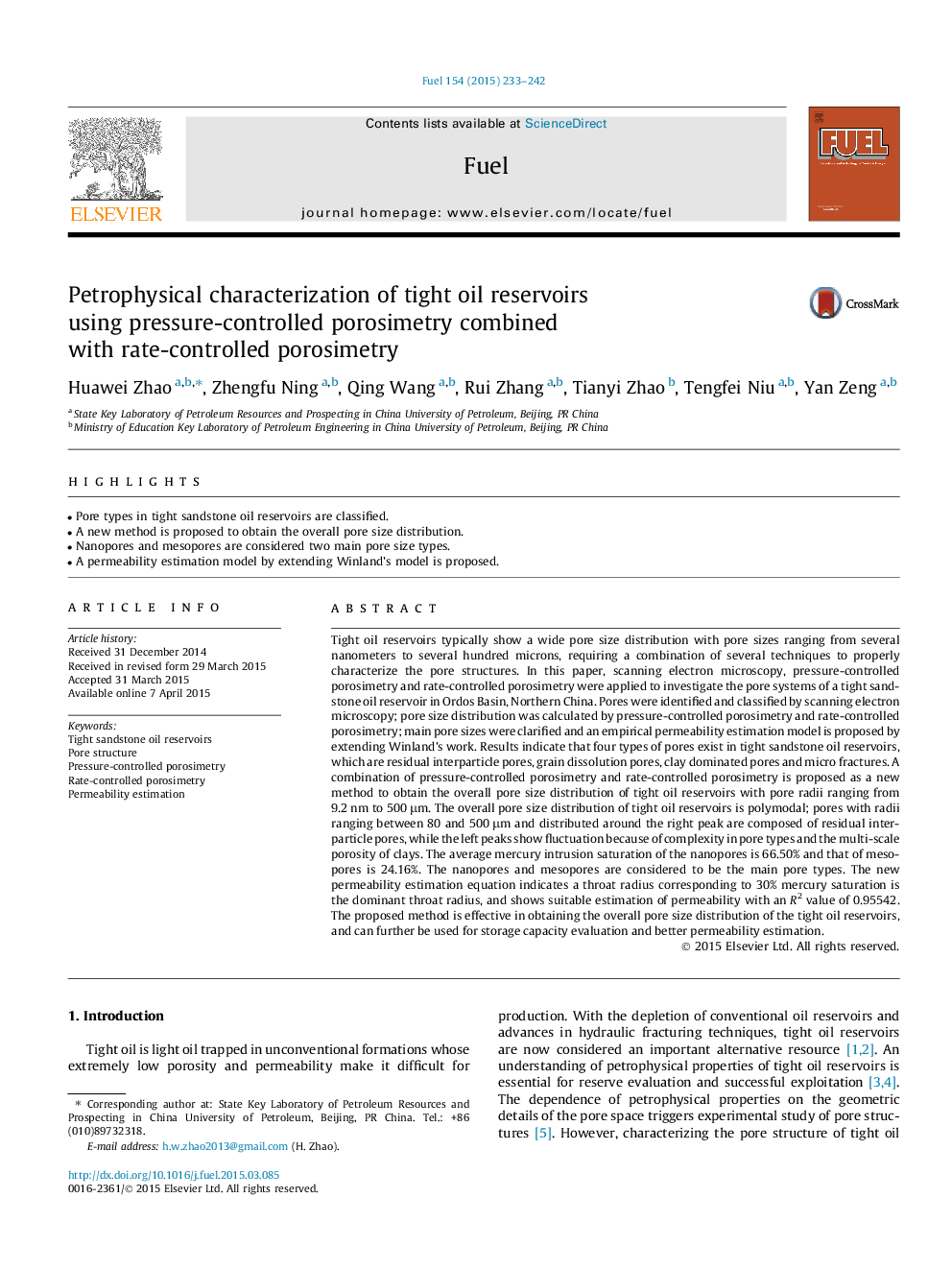| کد مقاله | کد نشریه | سال انتشار | مقاله انگلیسی | نسخه تمام متن |
|---|---|---|---|---|
| 6635459 | 461115 | 2015 | 10 صفحه PDF | دانلود رایگان |
عنوان انگلیسی مقاله ISI
Petrophysical characterization of tight oil reservoirs using pressure-controlled porosimetry combined with rate-controlled porosimetry
ترجمه فارسی عنوان
خصوصیات پتروفیزیکی مخازن نفت تنگ با استفاده از پوسیمتری تحت کنترل فشار همراه با پوسیمتری کنترل سرعت
دانلود مقاله + سفارش ترجمه
دانلود مقاله ISI انگلیسی
رایگان برای ایرانیان
کلمات کلیدی
مخازن روغن ماسه سنگ تنگ، ساختار پوسته، پوسیمتری تحت کنترل فشار، پوسیدگی سنجی با سرعت کنترل، برآورد نفوذپذیری،
موضوعات مرتبط
مهندسی و علوم پایه
مهندسی شیمی
مهندسی شیمی (عمومی)
چکیده انگلیسی
Tight oil reservoirs typically show a wide pore size distribution with pore sizes ranging from several nanometers to several hundred microns, requiring a combination of several techniques to properly characterize the pore structures. In this paper, scanning electron microscopy, pressure-controlled porosimetry and rate-controlled porosimetry were applied to investigate the pore systems of a tight sandstone oil reservoir in Ordos Basin, Northern China. Pores were identified and classified by scanning electron microscopy; pore size distribution was calculated by pressure-controlled porosimetry and rate-controlled porosimetry; main pore sizes were clarified and an empirical permeability estimation model is proposed by extending Winland's work. Results indicate that four types of pores exist in tight sandstone oil reservoirs, which are residual interparticle pores, grain dissolution pores, clay dominated pores and micro fractures. A combination of pressure-controlled porosimetry and rate-controlled porosimetry is proposed as a new method to obtain the overall pore size distribution of tight oil reservoirs with pore radii ranging from 9.2 nm to 500 μm. The overall pore size distribution of tight oil reservoirs is polymodal; pores with radii ranging between 80 and 500 μm and distributed around the right peak are composed of residual interparticle pores, while the left peaks show fluctuation because of complexity in pore types and the multi-scale porosity of clays. The average mercury intrusion saturation of the nanopores is 66.50% and that of mesopores is 24.16%. The nanopores and mesopores are considered to be the main pore types. The new permeability estimation equation indicates a throat radius corresponding to 30% mercury saturation is the dominant throat radius, and shows suitable estimation of permeability with an R2 value of 0.95542. The proposed method is effective in obtaining the overall pore size distribution of the tight oil reservoirs, and can further be used for storage capacity evaluation and better permeability estimation.
ناشر
Database: Elsevier - ScienceDirect (ساینس دایرکت)
Journal: Fuel - Volume 154, 15 August 2015, Pages 233-242
Journal: Fuel - Volume 154, 15 August 2015, Pages 233-242
نویسندگان
Huawei Zhao, Zhengfu Ning, Qing Wang, Rui Zhang, Tianyi Zhao, Tengfei Niu, Yan Zeng,
